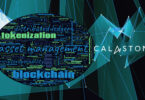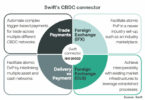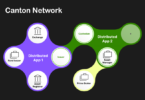We caught up with Kevin Otto, Senior Director at standards body GS1 US to discuss how COVID has impacted blockchain adoption and trends he’s seeing during its blockchain working group talks.
The main takeaway is the need for blockchain interoperability. That’s a multi-dimensional requirement, but the initial GS1 focus is on data standards in order to make data transferable and prevent vendor lock-in.
Another trend is that the blockchain interest has evolved from pure supply chain traceability to encompass sustainability, proof of provenance, and enhanced tracking, such as ensuring refrigerated goods are kept at a consistent temperature range.
In terms of the impact of COVID-19, key takeaways are there’s much less experimentation, and discussion about blockchain technology per se has dropped off. That’s replaced by a real need for supply chain solutions that address challenges such as a broader range of suppliers to help manage disruption. And blockchain happens to be a part of many of those solutions.
Another key driver in the U.S. is regulations, particularly in the food and pharmaceutical sectors, where blockchain can help address requirements.
Conversation with Kevin Otto
The interview below has been edited for readability.
Q: Are you seeing a lot less experimentation by enterprises during the pandemic?
Projects that were already launched and fully entrenched in people’s supply chains, such as some of the high-profile IBM Food Trust projects, are still being leveraged heavily. Those aren’t going anywhere. We are seeing a bit of a drop-off where people were maybe just discussing having a pilot and put the brakes on that during the height of the pandemic.
I lead a cross industry blockchain discussion group. People from the food service, retail grocery, apparel, general merchandise and healthcare sectors are represented on this call. I actually asked them, “are you still discussing blockchain internally?” They said we’re not discussing ‘blockchain’ anymore. We’re discussing how blockchain can actually help the supply chain issues that we saw exposed during the pandemic.
So it’s a bit of a change from how blockchain was positioned just a couple of years ago, where people were leading with the technology. Because it was new and it was hip, and there was so much hype around it that people wanted to talk about the technology itself.
Even technology providers that are on the call are telling us, we’re discussing in a simpler way how our solution can help drive your supply chain forward and root out some of the problems that became really acute during the pandemic. So it’s a bit of a shift in how people are talking about it, as opposed to the projects just being totally put on the shelf.
Q: The other thing we’ve seen is people are heads down and progressing projects and not talking about what they’re working on until it’s live. That’s a shift, perhaps out of concern for job security and not wanting to get on the radar. Are you seeing similar?
The discussion group is unique in that it was formed so that people could help educate others on the call on how blockchain is being leveraged in their organizations. Participants are open about what their organization is doing, to the extent that is reasonable. They’re not going disclose anything proprietary because sometimes a competitor is on the call. But we get quite a bit of sharing in our group.
I’m sure if you were to take a look outside of this discussion group, it would be exactly what you’re saying. People are a little bit more reticent to share what they’re working on because maybe it’s a competitive advantage that they don’t want to disclose anything.
Q: How have budgets been impacted?
That’s where we hear there’s a lot of give and take when we talk with the people in our group. Bottom lines have been hammered, obviously, during the pandemic. It would be naive to say there is no budget pressure on technology projects.
On the other side of the coin, there are forces driving technology projects forward regardless, such as changes in FDA regulations. The FDA has proposed new traceability rules as part of the Food Safety Modernization Act and is strongly encouraging the food industry to leverage emerging technology to make the food supply chain safer and more efficient. You can’t just put these projects on the shelf when faced with that.
Q: Has the budget pressure impacted whether enterprises want to work with startups versus big names?
A lot of startups have emerged, and they have carved out certain specialties. Still, many companies tend to lean a bit more towards the big names that they’re familiar with. We have both types of technology providers participating in our discussion group.
One of the most important things that we’re working on is interoperability between these different blockchain ledgers so that this doesn’t become the deciding point. It comes down to evaluating what’s important – a big provider has scale, but a smaller provider is able to better adapt to specific needs. There are a lot requests for proposals and companies coming to GS1 US for guidance on interoperability because nobody wants to be locked into using just one vendor. Solution choice has always been important in the supply chain industry.
The supply chain is increasingly complex and diverse. No one wants to have ten different blockchain partners to work with.
These projects will die if too many additional costs are added to the supply chain. We’re playing a big role in working with solution providers to make interoperability happen.
For example, we have a pilot going on right now with SAP, IBM, a startup called Ripe.io and another company called FoodLogiQ, which actually doesn’t have a blockchain solution. The idea is that with or without blockchain, GS1 standards allow the systems to talk to each other so that they are not locked into one vendor or even one particular technology.
Q: Are you looking to develop any blockchain specific standards?
It hasn’t started formally yet. We’re just not at that point in our process. Certainly people are having discussions about it. And just in the very preliminary discussions we’ve had, I think the biggest challenge to solve is still interoperability.
The challenge becomes can an industry sit down at a table together and agree on a set of standards that works for everybody. Part of that is coming to an understanding of what’s the right amount of data that should be visible and recorded on a blockchain. How much visibility is too much?
For example, there are suppliers we have talked with that are working a delicate balance where they want to provide increased transparency on a blockchain, but are still conscious of the idea that too much information can leave them open to scrutiny. These conversations need to happen in order to make this fully scalable and make sure the organization and industry partners are on board.
Q: Are the solution providers motivated to make them interoperable?
Yes, it can be a challenge moving forward. If the underlying principle is that we’re sharing standardized data, regardless of the platform we’re leveraging, then I think that these systems are going to have to find a way to interoperate or they’re not going to be scalable.
Q: Outside of food and pharma, are there any other sectors particularly interested in blockchain?
We’re starting to see quite a bit of interest in the apparel side. One of the things that’s driving all industries, not just apparel is the increasingly conscious consumer. People want to know where their product came from. In the case of apparel, can I track it back to the factory in which the garment was put together? Can I be sure workers were paid a fair wage?
These are all things that consumers are asking to have at their fingertips when they purchase products. In a global supply chain, that becomes really difficult to map. The apparel organizations that we talk to are looking at blockchain as a potential solution to show, not just is something sustainably sourced, but the provenance of it.
Especially in the apparel space, I want to know that if I paid $500 for a handbag, that it is the real deal. There’s so much fraud in that industry. People are really starting to take a hard look at blockchain and say, this might be a potential solution for transparency in an increasingly global supply chain.
You need different methods of sourcing products, as the pandemic and other disruptions have taught us. With that lesson learned, companies are looking at instilling more trust in their supply chain. The immutability of blockchain is beneficial for both expanding and diversifying supply chains and potentially providing the end consumer with more product details. These could be key competitive advantages in the future.
Q: Do you think sustainability was maybe further down the priority list and COVID has increased its importance?
When we first started our group, it became apparent that most companies were interested in using blockchain for enhanced supply chain visibility.
They weren’t looking at things like sustainability yet.
But what we’re finding as the group continues is that visibility and traceability are related to sustainability, in that it could be a part of the transparency use case. In general, this is still an area of opportunity and we’re keeping an eye on sustainability possibly ramping up in the so-called “next normal.”
Q: Has tipping farmers and the like come up as a topic?
Tokenization doesn’t apply to GS1 standards. That said, the only way you can make a system like that work is if you have interoperability. You can’t make the assumption that everybody, every step in the supply chain is leveraging the same blockchain technology.
Then, you need to have the standards in place that have uniquely identified locations and the items that farmers are producing in the supply chain, which is exactly what GS1 standards do. That information can be transmitted from one blockchain to another.
Q: Are there many requests for blockchain specific standards?
We are constantly listening to industry and it’s something that we are open to doing. There just hasn’t been a need yet.
GS1 standards that we’ve used for visibility in cloud-based solutions, EDI, and others have all been perfectly applicable in blockchain. But as we have those discussions and we see a specific need, we can absolutely begin to build new standards or enhance existing extent standards.
Q: Can you give some examples of the cross industry learning you are seeing?
We have talked a lot about food in the discussion group because there’s a lot of different food implementations and I mentioned IBM Food Trust. Then when we started talking about cold chain, people were looking at it really from the pharma lens because they were talking about cold chain transportation of vaccines.
And so that actually ported over to a conversation with cold chain (for food). You might not have been looking at this on the food side yet, but it’s obviously very relevant technology for the transportation of produce. Hearing from the pharmaceutical companies that yes, I can feed data about this particular vaccine and the temperature that it has been housed at, from the time it was moved from the manufacturer all the way to the site of distribution, and know that it has stayed within those parameters for temperature compliance.
And that obviously ports right over to the food service side. So we do see some of that where a light bulb goes off. I can have an IoT device in a truck that feeds information to a blockchain that tells me that my produce was housed within the requisite temperature the entire time.
(They say), that’s a next level use I hadn’t thought of, and again, this is where people were initially kind of coming with a lens of strictly supply chain visibility, and then are realizing if you’re leveraging blockchain properly and you have that visibility, there are so many things you can do to build on top of that. And that’s just kind of one example that’s come out in the discussions that we’ve had.
Q: In some sectors, such as financial derivatives, the standards don’t just cover data but also workflow, which is especially relevant to blockchain. Is GS1 likely to expand activities into the workflow?
What you’re referring to is something we would call an application standard. And so, for the Drug Supply Chain Security Act, we do have an application standard for that. I do see us getting involved in those discussions in the very near future.
So our group is cross industry right now. I think those discussions naturally have to happen within one industry and maybe even just one use case within one industry. But yes, I do see us getting involved there.
Pharma is the furthest along. So I think food is the next natural stopping point. In fact, the PoC that we’re working on for interoperability right now is focused on seafood.







